
a web page by Don Roberson |
NEW WORLD QUAILS Odontophoridae |
||
|
||
 |
||
California Quail is the State Bird of California, It is widely distributed within the western United States. It has also been introduced to a number of foreign locales — it also seems so odd to see this quail in Hawaii or New Zealand. |
||
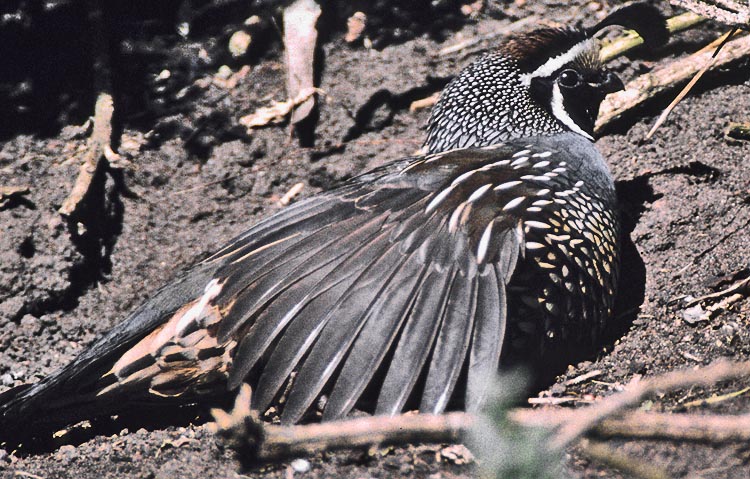 While
California Quail is common in many places, it has disappeared or
declined in some towns and cities. It no longer resides in my home town
of Pacific Grove, for example, possibly because the undergrowth is
mostly gone (Roberson & Tenney 1993). In San Francisco its range
was reduced to Golden Gate Park, where I took this photo (right) in
1995. Since then it has had severe populations declines within the
Park, primarily due to feral cats, and became a cause célèbre when local birders tried to reverse the trend with a campaign against feral cats. While
California Quail is common in many places, it has disappeared or
declined in some towns and cities. It no longer resides in my home town
of Pacific Grove, for example, possibly because the undergrowth is
mostly gone (Roberson & Tenney 1993). In San Francisco its range
was reduced to Golden Gate Park, where I took this photo (right) in
1995. Since then it has had severe populations declines within the
Park, primarily due to feral cats, and became a cause célèbre when local birders tried to reverse the trend with a campaign against feral cats. |
||
| In the eastern United States (and eastern Mexico) the widespread quail in Northern Bobwhite (below left, in a very nice photo by Greg W. Lasley). There three other species if bobwhite (genus Colinus) in Central America and northern South America. The northern species' call — a loud "bob-WHITE!"— gives away their location within its habitat of grassland, scrub, and agricultural fields. There is a huge variation in plumages among the subspecies of Northern Bobwhite in Mexican populations. In southwestern deserts, the common species is Gambel's Quail (calling male below right), closely related to California Quail. Hybrids between the two species are known where the ranges barely overlap in southeastern California. | ||
|
||
 |
||
The Montezuma Quail (right, another fine shot by Greg Lasley) is also elusive within its patchy habitat of pine-oak woodlands mixed with grasslands in parts of Arizona and Texas, and south into Mexico. It is a striking species in its lovely pattern; indeed, many of the secretive species are quite colorful. The most shy, retiring, and difficult groups among the New World quail are the tree-quail (3 species in genus Dendrortyx from Mexico to Costa Rica) and the wood-quail (15 species in genus Odontophorus, mostly in South America but a couple in Central America). Wood-quail often occur in small parties in subtropical forests. A number of species ave very limited ranges in the Andes, and little is known about these elusive species. |
||
Photos: The family of California Quail Callipepla californica was at Carmel R. mouth 28 May 2005, the adult male at Big Sur R. mouth 8 July 2006, both in Monterey Co., California, and the sunbathing adult was at Golden Gate Park, San Francisco, on 25 Mar 1995. Greg W. Lasley photographed the Northern Bobwhite Colinus virginianus in Kenedy Co., Texas, on 12 June 2000. The calling male Gambel's Quail Callipepla gambelii was at Morongo Valley, California, on 4 May 1983. The Mountain Quail Oreortyx pictus was on Chews Ridge, Monterey Co., California, on 29 Apr 2006. Greg W. Lasley photographed the Montezuma Quail Cyrtonyx montezumae at Ft. Davis, Texas, on 3 June 2001. Photos © 2007 Don Roberson, except those attributed to Greg W. Lasley, who holds those copyrights, used with permission; all rights reserved. Family book:
Literature cited:
|
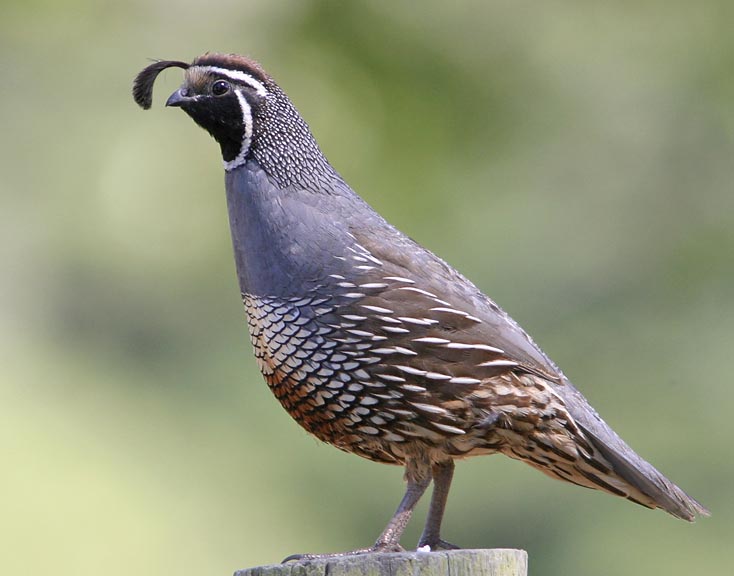 New World Quails are fairly small, compact, terrestrial fowl in the New World. A few are common and widespread, including California Quail
(above, left, below). Where we live in California they are widespread
in brushy or riparian habitats, and it is always entertaining to watch
their lives: from tiny chicks following the adults in spring (above).
to impressive males on song-posts and look-outs (left), or to marvel at
their colors when dust-bathing (below).
New World Quails are fairly small, compact, terrestrial fowl in the New World. A few are common and widespread, including California Quail
(above, left, below). Where we live in California they are widespread
in brushy or riparian habitats, and it is always entertaining to watch
their lives: from tiny chicks following the adults in spring (above).
to impressive males on song-posts and look-outs (left), or to marvel at
their colors when dust-bathing (below).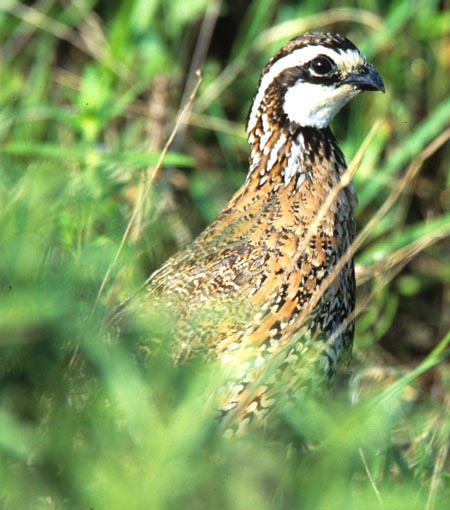
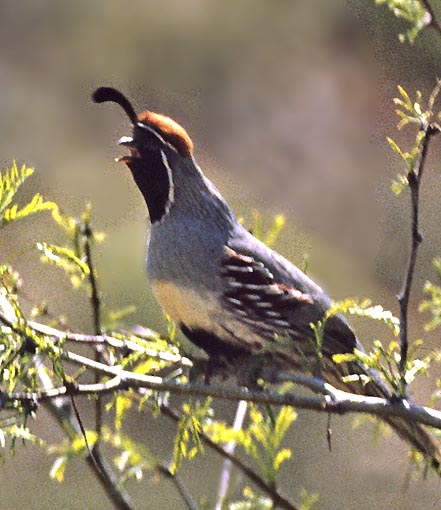
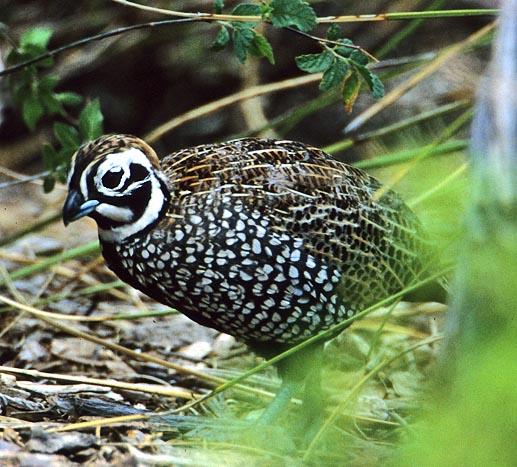 Most of the remaining members of the family are shy, secretive, and quite difficult to see. Mountain Quail (above) is one of those, ranging in montane chaparral from Washington state to Baja California. The male's loud qwaok!
call is easily heard in the thick underbrush of the rugged mountain
ranges of the west coast, but seeing one is always a challenge.
Most of the remaining members of the family are shy, secretive, and quite difficult to see. Mountain Quail (above) is one of those, ranging in montane chaparral from Washington state to Baja California. The male's loud qwaok!
call is easily heard in the thick underbrush of the rugged mountain
ranges of the west coast, but seeing one is always a challenge.